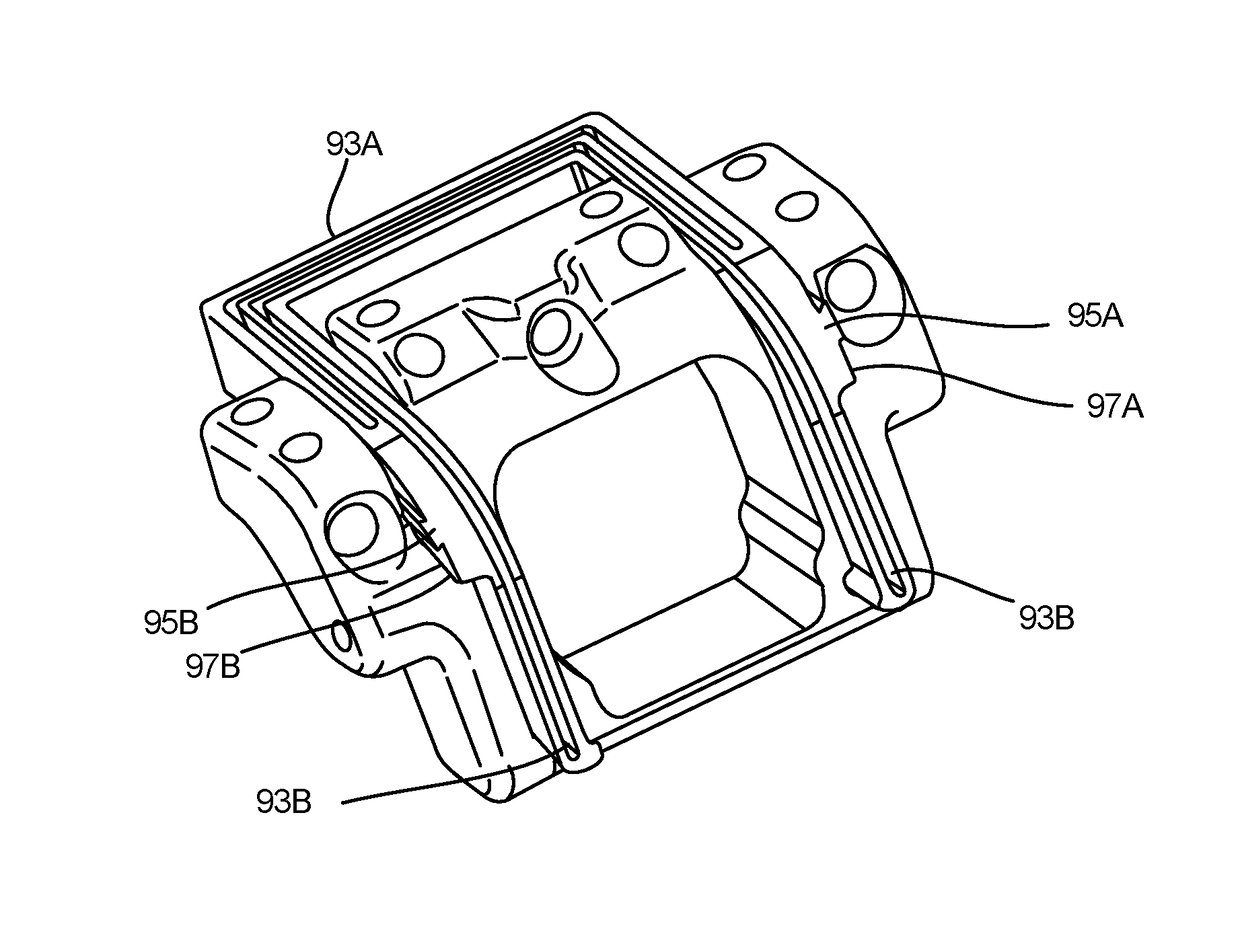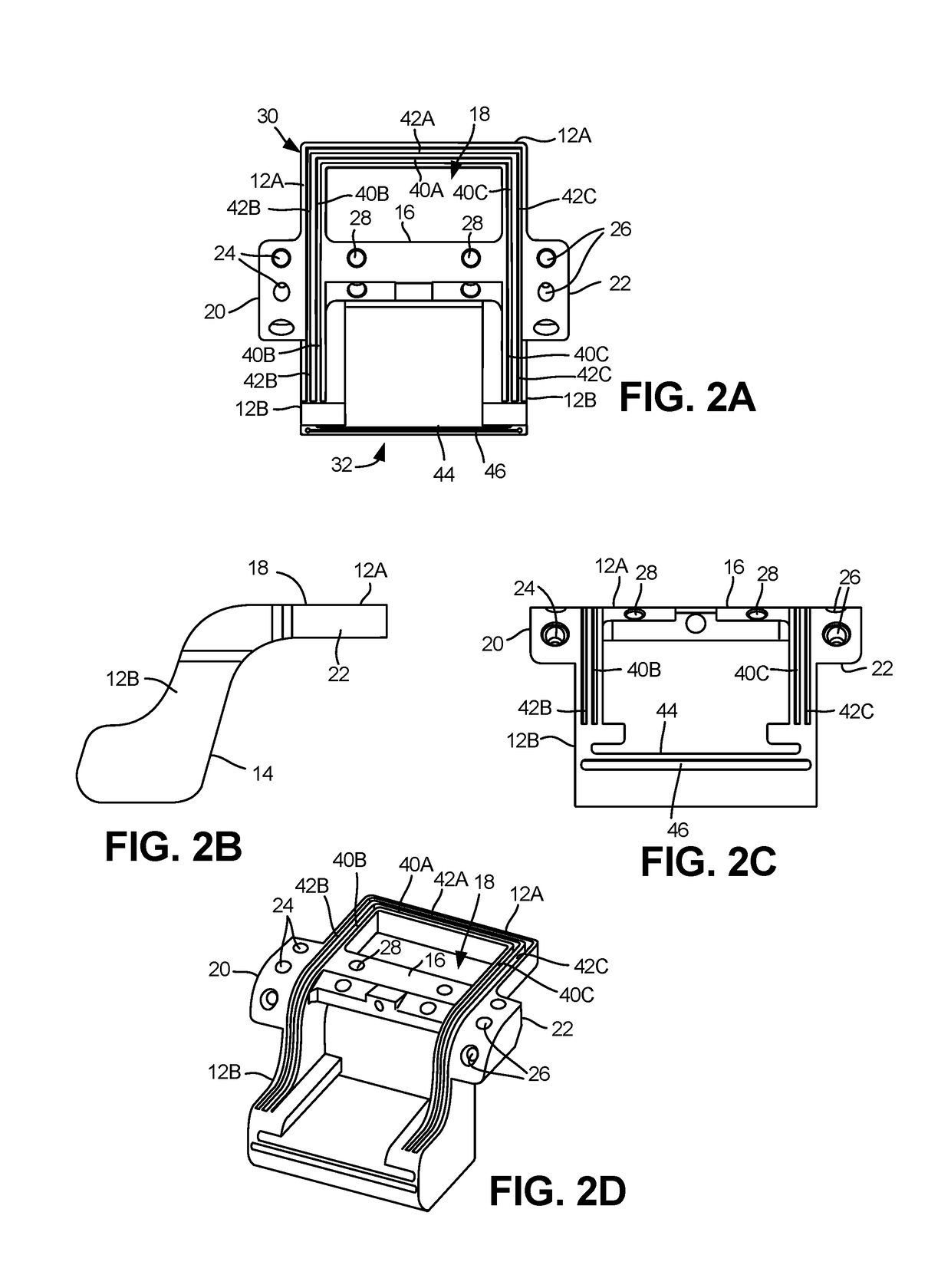Adjustable allograft templates and methods of use
a template and allograft technology, applied in the field of allogeneic graft resecting methods and equipment, can solve the problems of time-consuming and laborious setting up and use of cutting jigs, insufficient precision of cutting, and stress on the surface of talus and underlying injuries
- Summary
- Abstract
- Description
- Claims
- Application Information
AI Technical Summary
Benefits of technology
Problems solved by technology
Method used
Image
Examples
Embodiment Construction
[0065]An allograft template may be used as a cutting jig which allows for en bloc resection and grafting of tissue, namely portions of bone, between a donor and a patient. The template may be sized in various configurations such that the template may be used for resection and grafting along various regions of the body. Hence, while one particular application for the template may be for resection and grafting to correct for osteochondral lesions along the talus bone, the template may be used in various alternative orthopedic procedures.
[0066]The allograft template may facilitate guidance of the saw to allow for resection of a donor graft in a size which is slightly larger than the portion of bone to be resected from the patient bone. Because the same template may be used between the donor and the patient, the cuts may be maintained in a consistent manner between the resection sites. Moreover, by accounting for kerf losses in the bone due to the saw cuts, the resection sizes may be of...
PUM
 Login to View More
Login to View More Abstract
Description
Claims
Application Information
 Login to View More
Login to View More - R&D
- Intellectual Property
- Life Sciences
- Materials
- Tech Scout
- Unparalleled Data Quality
- Higher Quality Content
- 60% Fewer Hallucinations
Browse by: Latest US Patents, China's latest patents, Technical Efficacy Thesaurus, Application Domain, Technology Topic, Popular Technical Reports.
© 2025 PatSnap. All rights reserved.Legal|Privacy policy|Modern Slavery Act Transparency Statement|Sitemap|About US| Contact US: help@patsnap.com



